Understanding the Care Continuum in Hybrid Healthcare

Exploring the Evolution of Healthcare Delivery Models
The healthcare landscape is rapidly transforming with the adoption of hybrid models that seamlessly combine in-person and digital health interventions. These models are designed to enhance care quality, accessibility, and efficiency across diverse populations and care settings. Understanding the intricacies of the care continuum within hybrid healthcare is crucial for optimizing outcomes, addressing systemic challenges, and leveraging technological innovations. This article explores the components, roles, benefits, and challenges of the care continuum in hybrid systems, illustrating how integrated care fosters a patient-centered approach across the health journey.
Defining the Care Continuum in Hybrid Healthcare
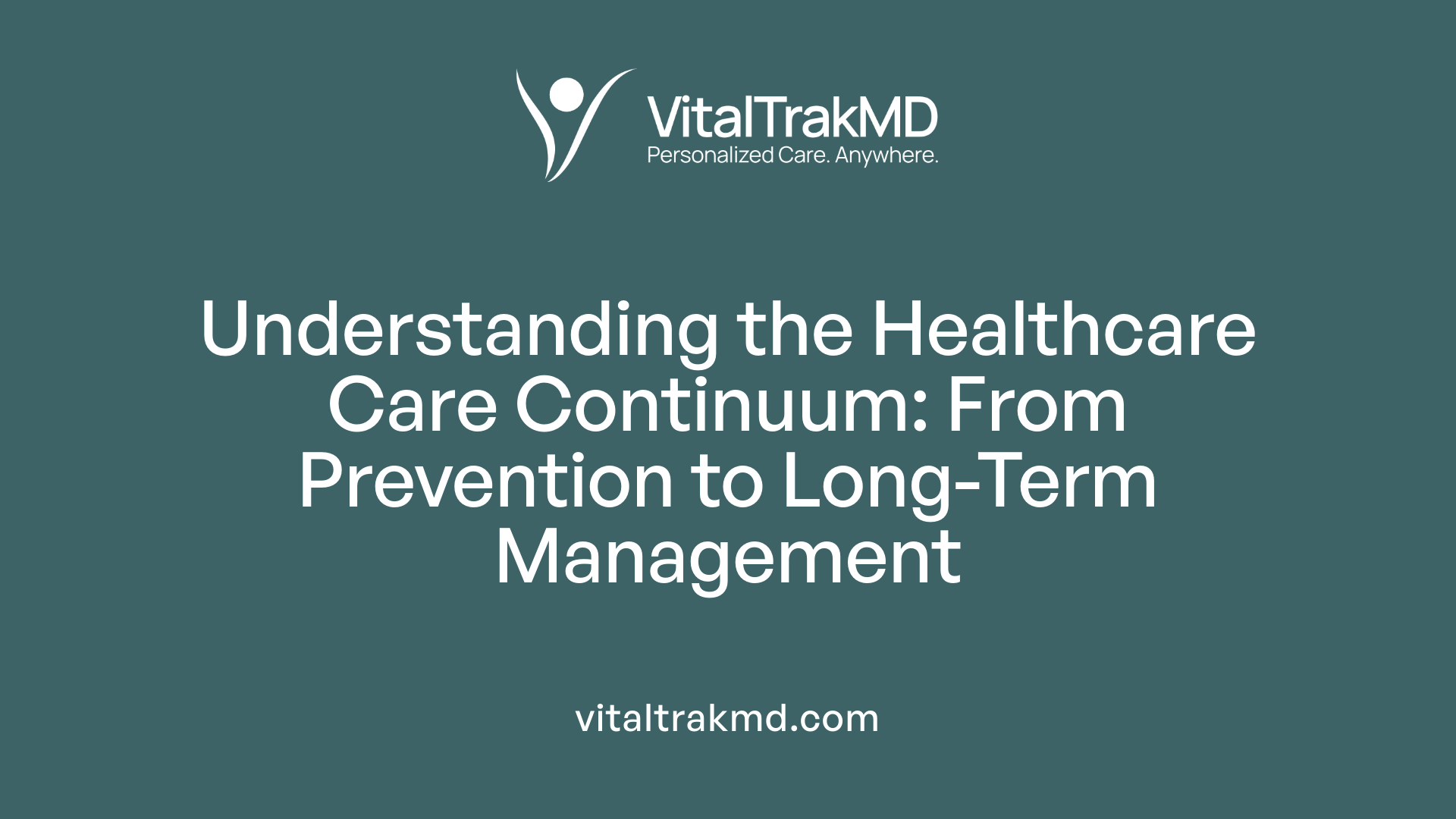
What is the concept of the care continuum in healthcare?
The care continuum in healthcare is a comprehensive approach that ensures patients receive coordinated and seamless health services throughout different stages of their health journey. This includes preventive care, diagnosis, treatment, rehabilitation, and ongoing management, all aimed at optimizing health outcomes.
A central feature of the care continuum is effective communication and collaboration among various providers, such as nurses, nurse practitioners, specialists, and primary care physicians. By sharing information and working together, providers can deliver consistent, patient-centered care that adapts to changing needs.
Clinical integration is critical for achieving this coordination. It involves aligning services across different care settings through health information technology like electronic health records and care management systems. This integration helps avoid fragmentation, reduce redundancies, and improve safety.
Supporting patient autonomy through education and informed decision-making fosters trust and encourages adherence to treatment plans. This patient-centered approach also empowers individuals to participate actively in their own care.
Ultimately, a well-functioning care continuum improves overall patient satisfaction, safety, quality of care, and reduces healthcare costs. It promotes a holistic view of health, addressing physical, mental, and social needs, which is essential in hybrid healthcare models that combine in-person and digital services.
Improved communication channels and teamwork among healthcare providers are vital to ensuring smooth transitions between different care phases and settings. This approach is particularly important in hybrid models, where technology bridges in-person visits and virtual interactions, enhancing access and continuity.
Core Components of the Care Continuum
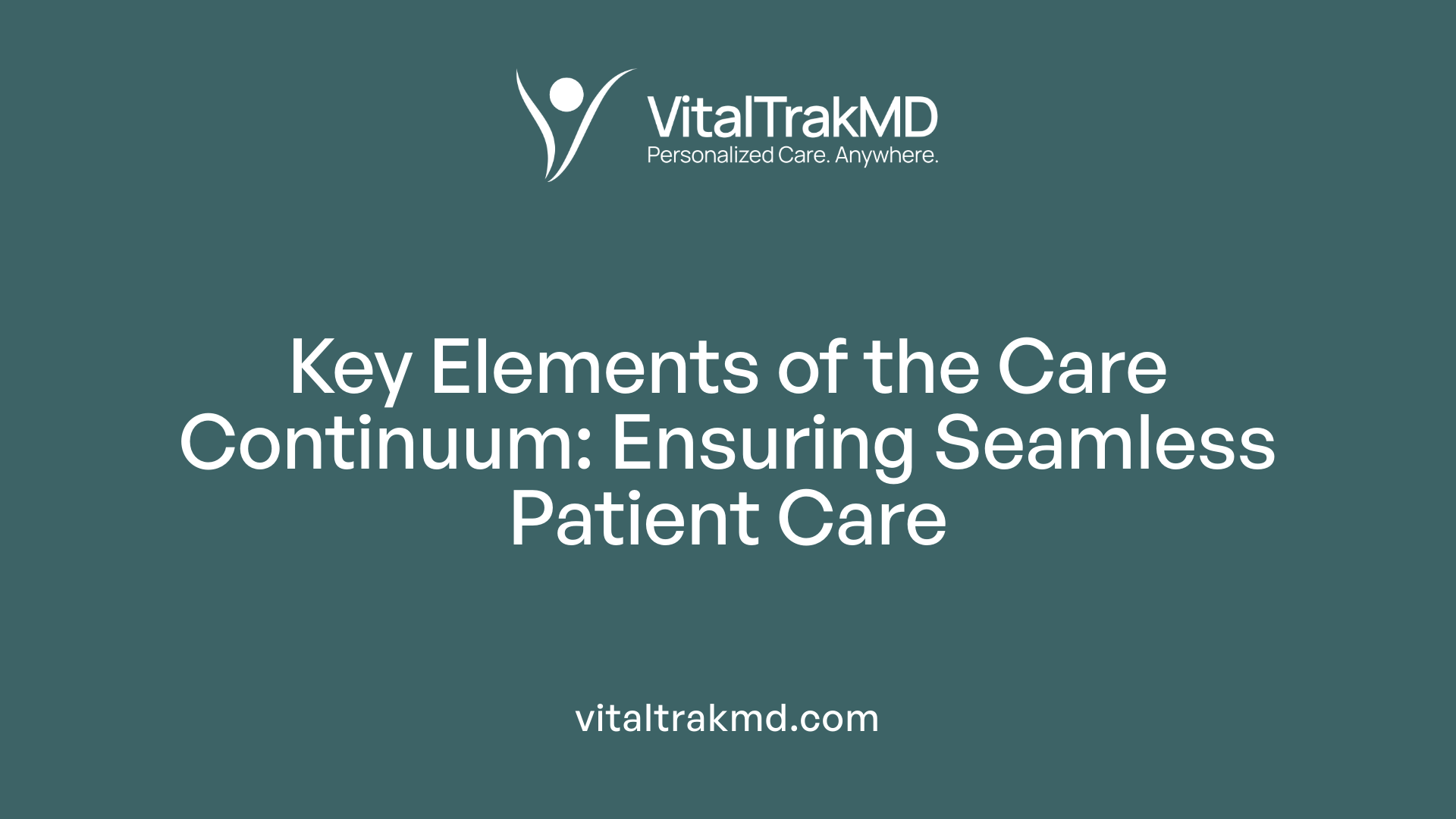
What are the main components of the care continuum in healthcare?
The healthcare care continuum consists of several interconnected components designed to provide seamless and comprehensive care to patients throughout their lives.
Preventive care is the first line of defense, focusing on health promotion and disease prevention before symptoms appear. Following this is primary care, which acts as the first point of contact and ongoing management for various health issues.
When health problems require specialized attention, patients access specialized and chronic care services. Long-term and rehabilitative services support recovery, technical management, and maintaining independence after illness or injury.
As health needs become more complex, short-term sub-acute and acute care address immediate health crises. Rehabilitative services help restore physical and mental functions, preparing patients for a return to daily life or further care.
Finally, end-of-life care offers comfort and support to individuals in their final stages of life, emphasizing dignity, pain management, and emotional support.
Each component plays a vital role in ensuring continuous, coordinated, and patient-centered healthcare, preventing gaps, and optimizing health outcomes across different stages of life.
For more insights, search using "Components of healthcare care continuum" to explore detailed models and strategies directing seamless transitions and integrated services across these stages.
Hybrid Healthcare: Integrating Digital Technologies and Physical Services
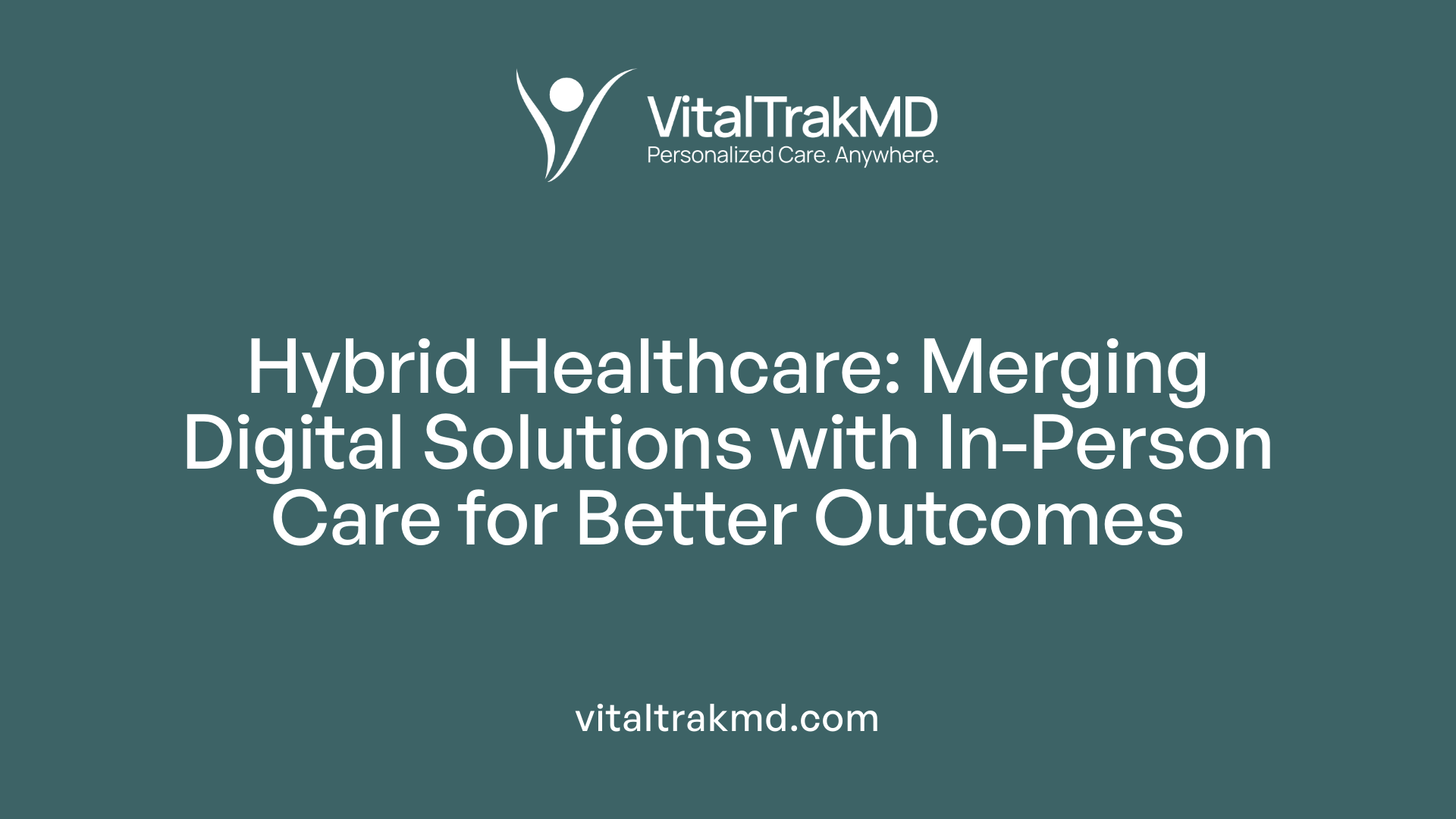
How does the hybrid healthcare model integrate digital and physical care elements?
The hybrid healthcare approach combines traditional face-to-face visits with innovative digital health solutions to improve patient care and service efficiency. This model leverages in-person consultations, ensuring direct, hands-on care while incorporating telehealth services that enable remote interactions.
Digital health tools play a vital role in this integration. Technologies such as remote monitoring devices, mobile apps, and specialized platforms like Medbridge Pathways facilitate continuous assessment and personalized treatment plans. For example, in musculoskeletal therapy, physical therapists utilize digital platforms to guide patients through tailored exercises, track progress, and adjust interventions without requiring frequent in-office visits.
Remote monitoring devices collect real-time data on vital signs, activity levels, or specific health parameters. This enables early detection of issues and timely adjustments from clinicians, increasing the effectiveness of treatments. Such continuous engagement can be especially beneficial for underserved populations or patients facing long wait times for therapy.
This blended model enhances care accessibility, timeliness, and customization. It allows clinicians to intervene early, support ongoing management, and provide education remotely, fostering better patient outcomes and satisfaction.
Moreover, hybrid care offers new revenue opportunities through remote therapeutic monitoring and virtual services, which can complement traditional service delivery. Implementing this system requires effective change management, including staff training and workflow adjustments, to ensure seamless integration.
Ultimately, combining in-person visits with digital health tools creates a comprehensive care environment. This not only addresses individual health needs more effectively but also optimizes resource use, making healthcare more adaptable, patient-centered, and efficient.
The Role of Healthcare Providers in the Care Continuum
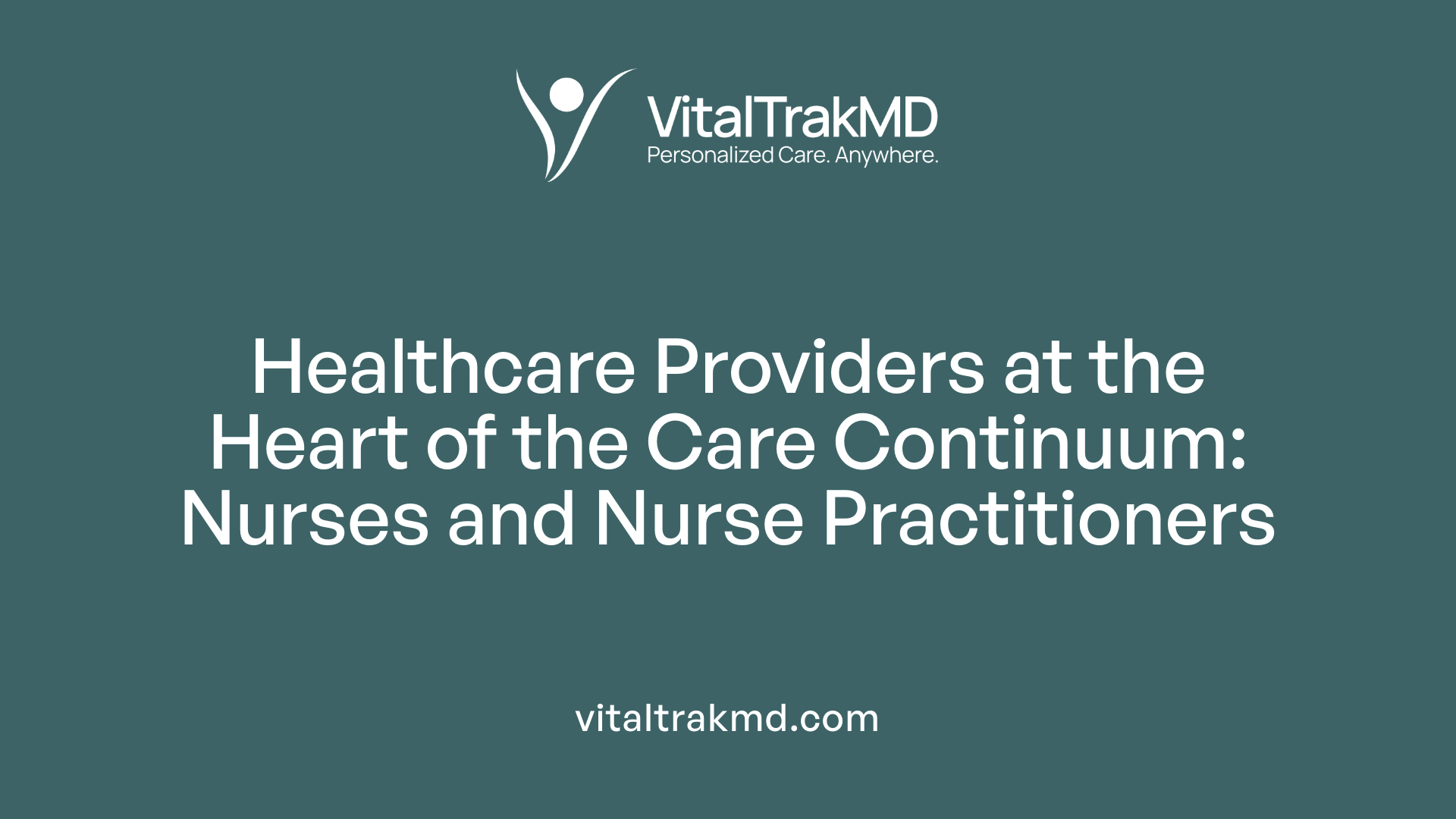 Healthcare providers such as nurses and nurse practitioners are crucial at every stage of the patient care continuum. Their roles extend from preventive health measures to managing chronic conditions, ensuring patients receive comprehensive attention tailored to their needs.
Healthcare providers such as nurses and nurse practitioners are crucial at every stage of the patient care continuum. Their roles extend from preventive health measures to managing chronic conditions, ensuring patients receive comprehensive attention tailored to their needs.
Nurses serve in various settings, including homes, community health centers, and telehealth platforms. They play a vital role in establishing initial contact, offering health education, managing ongoing care, and facilitating smooth transitions between different care environments. This involvement is especially significant for underserved populations, helping to bridge gaps in healthcare access and improve overall health outcomes.
Nurse practitioners (NPs), possessing advanced clinical training, act as primary care providers in many settings. They diagnose illnesses, prescribe treatments, and oversee ongoing management of health conditions. NPs can lead multidisciplinary teams, support care coordination efforts, and provide holistic care that addresses physical, emotional, and social aspects of health.
Together, nurses and NPs contribute to reducing healthcare disparities by extending access, improving quality, and promoting continuity. Their proactive roles are essential for patient advocacy—ensuring that individual preferences and needs are prioritized throughout the care journey. By fostering communication among providers, managing transition processes, and addressing barriers, these professionals improve health trajectories from diagnosis to recovery and maintenance.
Benefits and Opportunities of a Care Continuum in Hybrid Systems
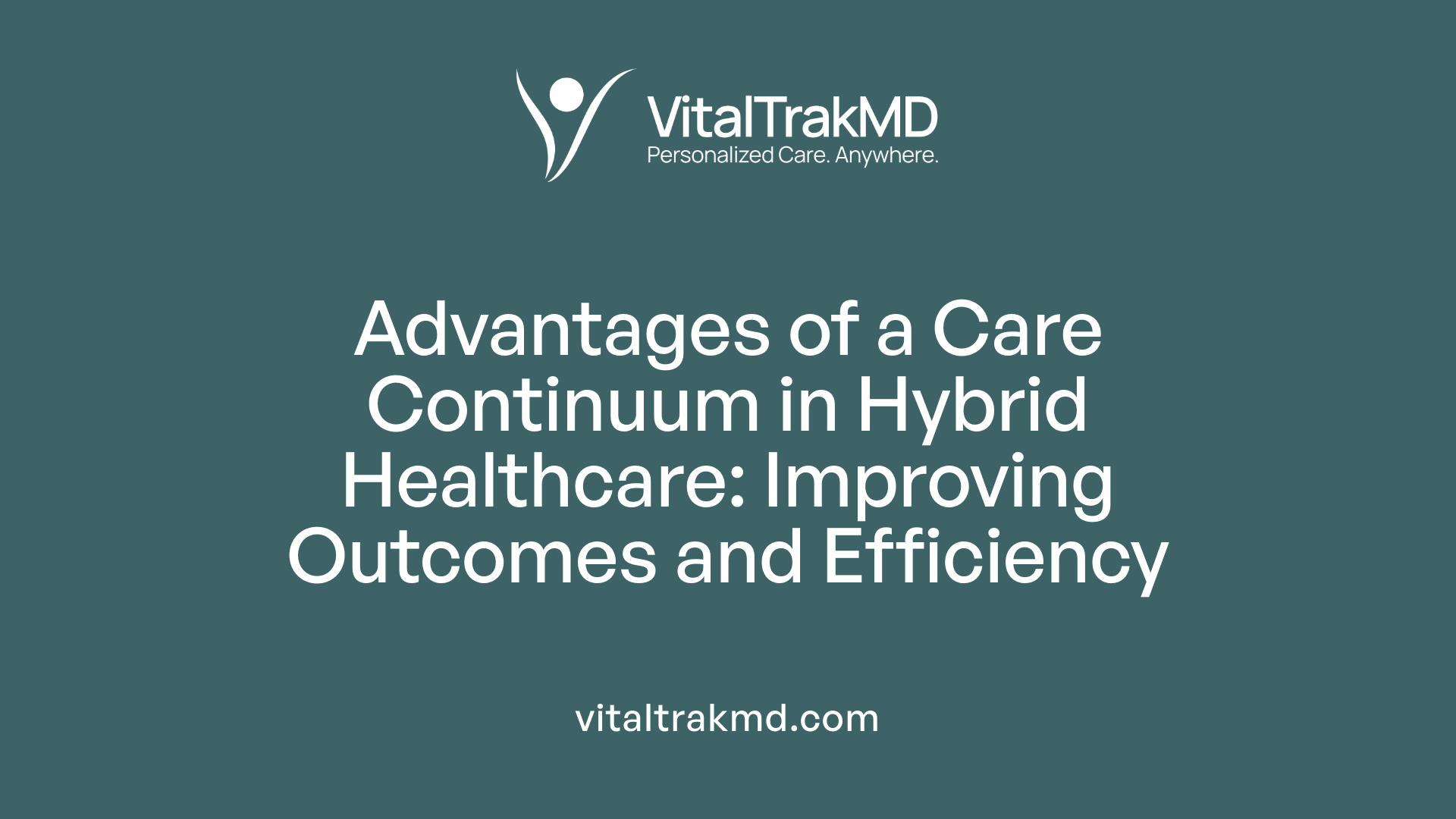
What are the benefits of implementing a care continuum in healthcare?
A care continuum integrates different healthcare services and levels, providing a seamless experience for patients as their needs change over time. This approach facilitates continuous and coordinated care, which is essential for managing complex and chronic health conditions across all life stages.
Implementing a care continuum enhances communication among providers, allowing for better information sharing and collaboration. This reduces redundancies, such as repeated testing or unnecessary hospital visits, and helps prevent readmissions by ensuring patients receive appropriate follow-up and support.
Long-term relationships between patients, families, and healthcare teams are a hallmark of an effective care continuum. These bonds support aging in place, promote trust, and respect patient dignity. Furthermore, combining traditional in-person care with innovative hybrid models—like telehealth and digital health tools—broadens access, reduces disparities, and ensures care is available regardless of location or mobility.
The consistent flow of well-coordinated services contributes to better health outcomes. It enables earlier intervention, personalized treatment plans, and integrated management of comorbidities. Additionally, leveraging data sharing and standardized protocols fosters a more efficient use of resources, helping to control costs while improving service quality.
Ultimately, a strong care continuum promotes health equity by addressing social and systemic barriers that often hinder vulnerable populations' access to timely and appropriate care. It supports a holistic, patient-centered approach that adapts to individual needs and encourages proactive health management.
Challenges and Strategic Opportunities in Establishing a Care Continuum
What challenges are faced when establishing a care continuum, and what opportunities does it present?
Building a comprehensive care continuum involves connecting different stages and settings of healthcare, from prevention to rehabilitation and long-term management. However, several obstacles hinder this process.
One major challenge is system fragmentation. Healthcare organizations often operate in silos, with inconsistent policies, separate data systems, and varying levels of technology adoption. This leads to poor integration and hinders data sharing across providers and institutions.
Data sharing barriers further complicate efforts, as incompatible electronic health records (EHRs), privacy regulations, and organizational concerns restrict the seamless exchange of vital patient information. This can delay diagnosis, treatment, and follow-up, affecting overall care quality.
Workforce shortages are another critical issue, especially in primary care and specialized fields. Limited staff availability and high turnover rates make consistent patient-provider relationships difficult to sustain, impacting relational continuity.
Transitions between care settings—such as from hospital to home—often involve communication breakdowns, leading to errors, duplication of tests, or missed follow-up care. These gaps affect management continuity, reduce patient safety, and diminish trust in healthcare systems.
Cultural disparities and social determinants of health further complicate care delivery, requiring tailored approaches to meet diverse needs.
Despite these challenges, establishing a robust care continuum offers numerous opportunities. Well-designed systems can boost patient engagement and satisfaction by providing more personalized, coordinated, and continuous care.
Leveraging digital health tools like integrated EHRs, telehealth, and remote monitoring can facilitate real-time information exchange and expand access across different regions and populations.
Fostering interprofessional collaboration among healthcare teams enhances care consistency and leverages diverse expertise. Policy reforms that support seamless data sharing, workforce training, and resource allocation are equally vital.
Addressing system fragmentation and creating reliable, interoperable digital infrastructure can greatly improve care transitions, ultimately resulting in better health outcomes, increased efficiency, and more equitable access for all patient populations.
In summary, overcoming systemic barriers while embracing digital innovation and team-based care can transform healthcare systems into more seamless, responsive, and patient-centered networks.
Technological Innovations Facilitating the Care Continuum
How do technological advancements facilitate the care continuum?
Recent technological progress has significantly improved how healthcare delivery is organized across the entire patient journey. Electronic health records (EHRs) serve as foundational tools, enabling providers to access comprehensive patient data swiftly, ensuring continuity and reducing redundancies.
Telehealth has emerged as a vital component, expanding access to care beyond traditional settings. It supports remote consultations, follow-ups, and monitoring, particularly benefiting patients with mobility issues or those living in remote areas. During the COVID-19 pandemic, telehealth usage surged, transforming outpatient and post-acute care.
Artificial intelligence (AI) and machine learning (ML) are revolutionizing clinical decision-making. These technologies analyze large datasets to provide personalized treatment recommendations, predict disease progression, and support early interventions. AI-powered tools also assist in managing chronic conditions, such as COPD, by monitoring patient status and alerting providers to potential issues.
Interoperability standards facilitate data exchange between different health systems and organizations. When healthcare providers can seamlessly share information, coordinated care becomes more effective, reducing gaps and redundancies. This integrated data flow allows for timely interventions and better management of long-term and acute conditions.
Digital tools like patient portals enhance engagement by enabling individuals to view their health records, schedule appointments, and communicate with providers directly. Remote monitoring devices and portable diagnostics offer real-time insights into patient health, aiding early diagnosis and ongoing management.
Clinical workflows are streamlined through electronic medication management, robotic assistance, and automated documentation, which reduce errors and improve safety. Overall, these innovations collectively support a more efficient, patient-centered approach, ensuring continuous, coordinated care throughout the healthcare continuum.
Harnessing Continuity for a Healthier Future
The integration of digital and physical health services within the care continuum represents a transformative approach to healthcare delivery. By fostering seamless coordination among providers, leveraging technological innovations, and emphasizing patient-centered care, hybrid healthcare models have the potential to improve clinical outcomes, enhance patient experiences, and achieve systemic efficiencies. Addressing challenges such as data sharing barriers, workforce shortages, and organizational fragmentation will be critical to realizing this potential. Through strategic investments, supportive policies, and collaborative efforts, healthcare systems worldwide can build resilient, equitable, and high-quality care networks that serve populations effectively today and in the future.
References
- Continuity and care coordination of primary health care: a scoping ...
- What Does a Hybrid Model of Care Mean for Higher Education?
- [PDF] Going Beyond Digital: Why Hybrid Care is the Future of Health Care
- A Hybrid Approach - Bridge House
- Hybrid Healthcare - Provista
- Continuum of Care in Healthcare: Definition, Benefits & Example
- HIV Care Continuum
- Hybrid pregnancy care | SpringerLink
- Understanding why racial/ethnic inequities along the HIV care ...
- Why Crossover Health's Hybrid Model Sees Mental Health as Core ...
Recent articles
Want to Feel Better and Live Healthier?
Join hundreds of patients taking control of their health with personalized care that fits their life – not the other way around.
Rated 4.8/5 by 32+ customers







